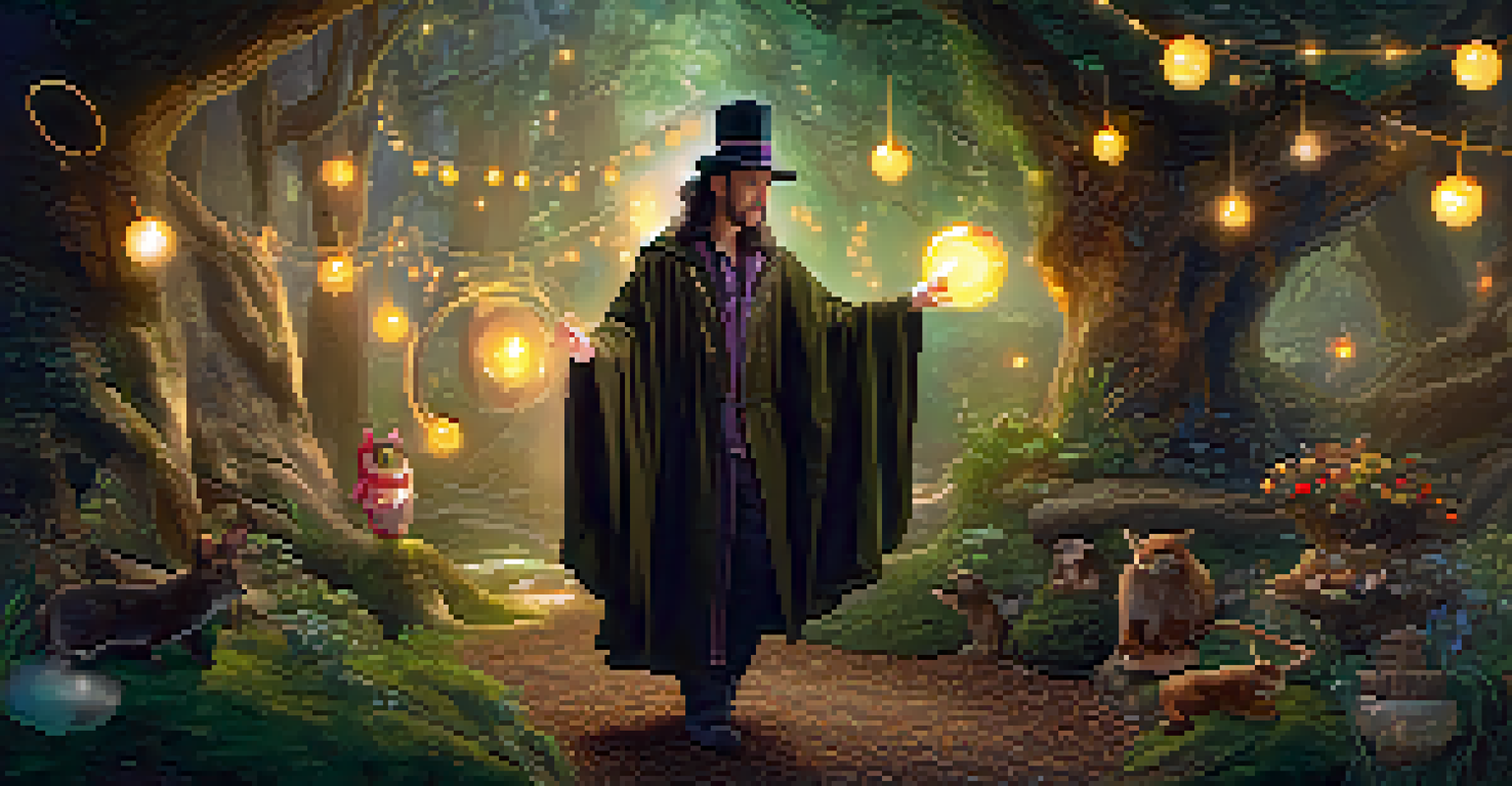Creating a Magic Show: Tips for Aspiring Illusionists

Understanding Your Audience: The First Step in Magic
Before you even think about your tricks, take a moment to consider who will be watching your show. Different audiences can react in various ways, from children to adults. Tailoring your performance will make it more engaging and enjoyable for everyone involved.
The magic of a performance lies not in the tricks themselves, but in the connection you create with your audience.
For instance, if you're performing for kids, you might want to incorporate colorful props and silly jokes. On the other hand, a more sophisticated crowd may appreciate a deeper narrative or clever wordplay. Understanding your audience sets the tone for your entire performance.
Remember, a magician's goal is to create a connection with the audience. By knowing their preferences, you can craft a show that resonates, leaving them both amazed and entertained.
Selecting the Right Tricks: Quality Over Quantity
When it comes to magic tricks, less is often more. Instead of cramming your show full of every trick you know, focus on a few that you can perform exceptionally well. This not only builds your confidence but also ensures a polished performance.

Consider the types of tricks that best suit your style and the audience's interests. Card tricks, illusions, and mentalism all have their place, but mastering a handful of tricks can create a stronger impact than a flurry of half-practiced routines.
Know Your Audience for Engagement
Understanding your audience allows you to tailor your performance, making it more enjoyable and memorable for everyone.
For example, a well-executed card trick can leave audiences gasping, while a poorly done illusion might lead to confusion. Choose your repertoire wisely and dedicate time to perfecting each aspect of your chosen tricks.
The Importance of Practice: Perfecting Your Performance
In magic, practice truly does make perfect. Whether you're working on sleight of hand or timing your cues, consistent practice helps eliminate mistakes and builds your confidence. It's as simple as putting in the hours to refine your craft.
It’s not what you do, but how you do it that makes the magic happen.
Try performing in front of a mirror or recording yourself to spot areas for improvement. This way, you can see how your audience might perceive your performance and make necessary adjustments. Remember, even the greatest magicians started somewhere, often with countless hours of practice.
Moreover, consider gathering a small group of friends or family for a 'dress rehearsal.' Their feedback can be invaluable, helping you fine-tune your act before facing a larger audience.
Creating a Theme: Tying Your Show Together
A cohesive theme can elevate your magic show from a collection of tricks to a memorable experience. Think about the story you want to tell or the atmosphere you wish to create. This could be anything from a whimsical fairy tale to a mysterious detective narrative.
For instance, if your theme is 'the enchanted forest,' your tricks could involve props like wands, fairies, and magical creatures. This not only enhances the visual appeal but also engages the audience's imagination, drawing them deeper into your performance.
Focus on Quality Tricks
Mastering a few quality tricks rather than performing many half-practiced ones creates a stronger impact on your audience.
Moreover, having a theme allows for smoother transitions between tricks and keeps the audience captivated. They’ll be more likely to remember your show if it has a strong, unified concept.
Engaging Your Audience: Interaction is Key
Magic is as much about audience engagement as it is about trickery. Involving your audience can turn a good performance into a great one. Whether it’s asking for volunteers or encouraging reactions, audience interaction adds an element of surprise.
For example, during a trick, you might ask a spectator to pick a card or hold a prop, making them part of the magic. This not only makes them feel special but also enhances the overall experience for everyone watching.
Remember, the more connected your audience feels to the performance, the more they’ll enjoy it. Their laughter, gasps, and applause can be the fuel that drives your performance forward.
The Power of Presentation: Showmanship Matters
In magic, how you present your tricks often matters just as much as the tricks themselves. A captivating performance relies on your charisma, body language, and vocal delivery. Think of your performance as a form of storytelling.
Consider how famous magicians like David Copperfield or Penn & Teller captivate their audiences, not just with illusions but with their engaging personalities and unique styles. Practicing your stage presence can have a lasting impact on how the audience perceives your magic.
Practice for a Polished Performance
Consistent practice and feedback from others are essential to refine your magic show and enhance your confidence.
Incorporate elements like humor, drama, or suspense to keep viewers on the edge of their seats. A well-timed joke or a dramatic pause can amplify the magic, making your show unforgettable.
Final Touches: Rehearsing and Fine-Tuning Your Show
Once you've crafted your magic show, it's time for the final touches. This involves not only perfecting your tricks but also ensuring that your entire performance flows seamlessly. Rehearse from start to finish, paying attention to transitions and timing.
As you rehearse, think about the pacing of your show. Are there moments that drag on too long? Are your transitions fluid? Adjusting these elements can elevate your show, making it feel more professional and cohesive.

Finally, don’t forget to incorporate feedback from your practice audiences. Their insights can help you identify any rough spots that need smoothing out, ensuring your show is polished and ready to dazzle.